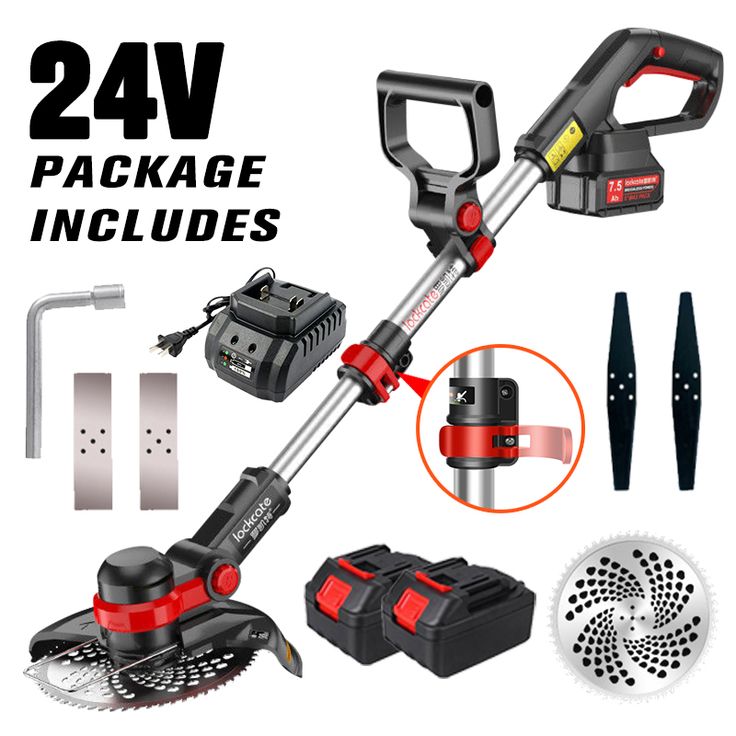Proper storage is a critical, yet often overlooked, aspect of string trimmer maintenance. Whether you’re putting your trimmer away for a few weeks between uses or preparing it for long-term off-season storage, taking the right steps can significantly extend its lifespan, prevent costly repairs, and ensure it’s ready to go when you need it next. Neglecting proper storage can lead to issues like fuel system clogs, battery degradation, rust, and general wear and tear. This article will guide you through the essential steps for storing your string trimmer correctly, ensuring its longevity and reliable performance.
1. Clean Thoroughly Before Storage
The first and most crucial step before any storage is a comprehensive cleaning. Built-up grass clippings, dirt, sap, and debris can cause corrosion, harbor moisture, and attract pests.
- Remove All Debris: Use a stiff brush, a damp cloth, or even compressed air to thoroughly clean the trimmer head, guard, shaft, and engine/motor housing. Pay close attention to air vents and any areas where grass might wrap around the shaft.
- Inspect for Damage: While cleaning, take the opportunity to inspect the trimmer for any damage, loose screws, or worn parts. It’s better to address these now than discover them when you’re ready to use the trimmer again.
- Clean the Line Head: Remove the spool cap and clean out any accumulated debris from inside the trimmer head. This prevents jamming and ensures smooth line feeding when you next use it.
2. Address the Power Source
The way you prepare your trimmer’s power source depends on whether it’s gas, battery, or corded electric.
For Gas-Powered String Trimmers:
Proper fuel management is paramount to prevent carburetor issues.
- Drain Fuel (Long-Term Storage): For storage longer than 30 days, it’s highly recommended to drain all fuel from the tank. Then, run the engine until it completely runs out of fuel to ensure the carburetor is dry. This prevents stale fuel from gumming up the carburetor.
- Use Fuel Stabilizer (Short-Term/Alternative): If you prefer not to drain the fuel for shorter storage periods (up to a few months), add a high-quality fuel stabilizer to fresh fuel before filling the tank. Run the engine for a few minutes to circulate the stabilized fuel through the system.
- Remove Spark Plug: For long-term storage, remove the spark plug and add a small amount (a teaspoon) of engine oil into the cylinder. Gently pull the starter cord a few times to distribute the oil, then reinstall the spark plug. This lubricates the cylinder walls and prevents rust.
For Battery-Powered String Trimmers:
Battery care directly impacts its lifespan.
- Remove Battery: Always remove the battery pack from the trimmer before storage.
- Charge Level: Store lithium-ion batteries at a partial charge, typically between 40-60%. Storing them fully charged or completely depleted can reduce their overall lifespan.
- Cool, Dry Place: Store batteries in a cool, dry place, away from direct sunlight, extreme temperatures, and moisture.
For Corded Electric String Trimmers:
- Clean and Coil Cord: Wipe down the power cord and coil it neatly to prevent kinks and damage. Secure it with a tie.
3. Prepare the Cutting Line
- Inspect and Replace Worn Line: If the existing line is very short, frayed, or brittle, consider replacing it now so it’s fresh for the next use.
- Store Line Properly: If you have extra spools or bulk line, store them in a cool, dry place to prevent them from becoming brittle. Some users even recommend soaking new line in water for 24 hours before use to improve flexibility.
4. Choose the Right Storage Location
The environment where you store your trimmer is crucial.
- Dry and Clean: Always store your string trimmer in a dry, clean location, such as a garage, shed, or workshop. Humidity can lead to rust and corrosion.
- Temperature Control: Avoid extreme temperature fluctuations. Garages are generally fine, but avoid uninsulated sheds that get extremely hot or cold.
- Secure Position: Store the trimmer in a way that prevents it from falling or being knocked over. Many trimmers can be hung vertically on a wall using a hook, which saves space and keeps them out of the way. If storing horizontally, ensure it’s on a stable surface.
- Protect from Pests: Ensure the storage area is free from rodents or insects that could damage wiring or other components.
By following these comprehensive storage tips, you’ll not only protect your string trimmer from environmental damage and operational issues but also ensure it’s always ready to perform at its best, season after season. A little proactive care goes a long way in maximizing your tool’s longevity and saving you time and money on future repairs.


